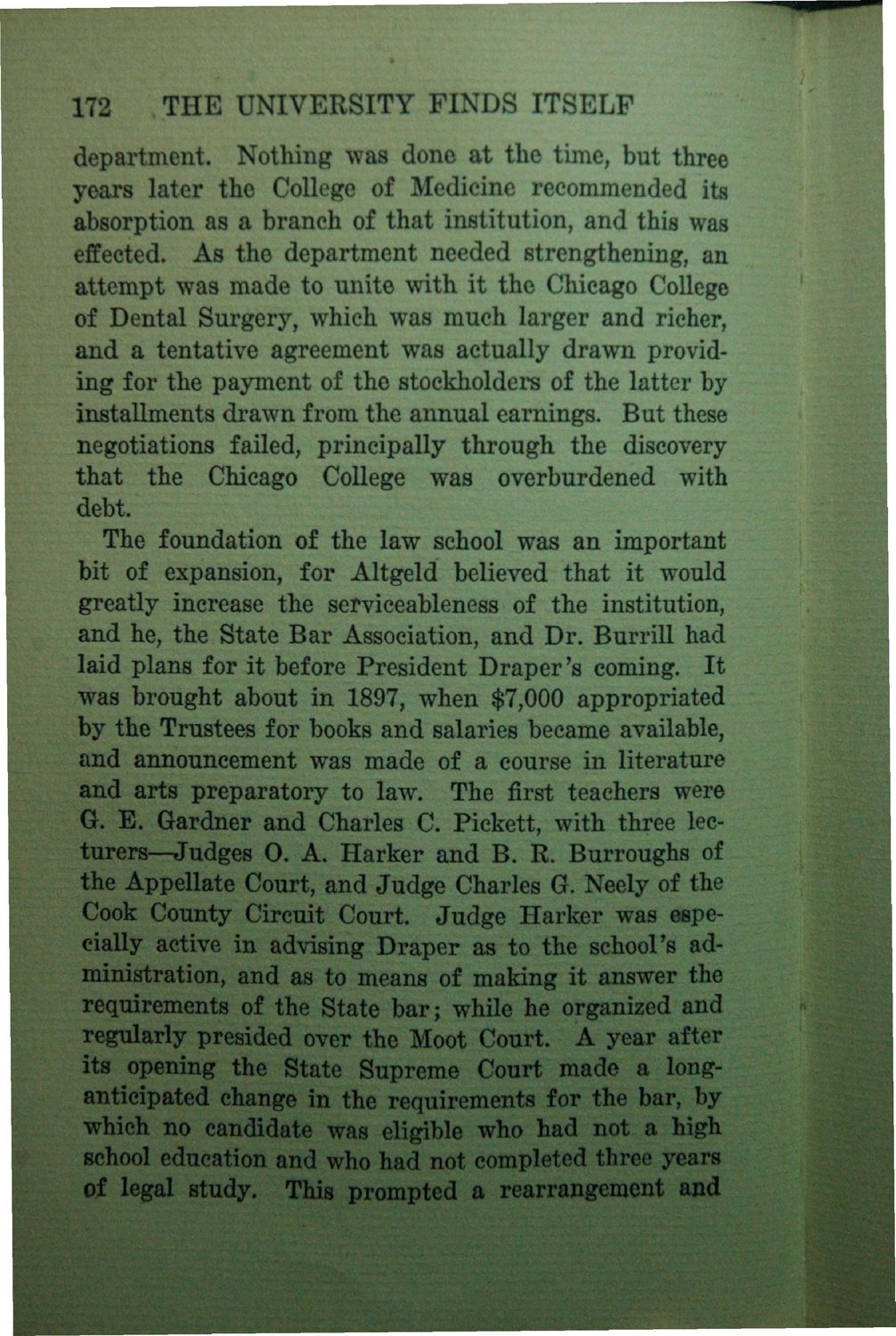| |
| |
Caption: Book - History of the University (Nevins)
This is a reduced-resolution page image for fast online browsing.

EXTRACTED TEXT FROM PAGE:
172 . THE UNIVERSITY FINDS ITSELF department. Nothing was done at the time, but three years later the College of Medicine recommended its absorption as a branch of that institution, and this was effected. As the department needed strengthening, an attempt was made to unite with it the Chicago College of Dental Surgery, which was much larger and richer, and a tentative agreement was actually drawn providing for the payment of the stockholders of the latter by installments drawn from the annual earnings. But these negotiations failed, principally through the discovery that the Chicago College was overburdened with debt. The foundation of the law school was an important bit of expansion, for Altgeld believed that it would greatly increase the serviceableness of the institution, and he, the State Bar Association, and Dr. Burrill had laid plans for it before President Draper's coming. It was brought about in 1897, when $7,000 appropriated by the Trustees for books and salaries became available, and announcement was made of a course in literature and arts preparatory to law. The first teachers were G. E. Gardner and Charles C. Pickett, with three lecturers—Judges O. A. Harker and B. R. Burroughs of the Appellate Court, and Judge Charles G. Neely of the Cook County Circuit Court. Judge Harker was especially active in advising Draper as to the school's administration, and as to means of making it answer the requirements of the State bar; while he organized and regularly presided over the Moot Court. A year after its opening the State Supreme Court made a longanticipated change in the requirements for the bar, by which no candidate was eligible who had not a high school education and who had not completed three years of legal study. This prompted a rearrangement and
| |